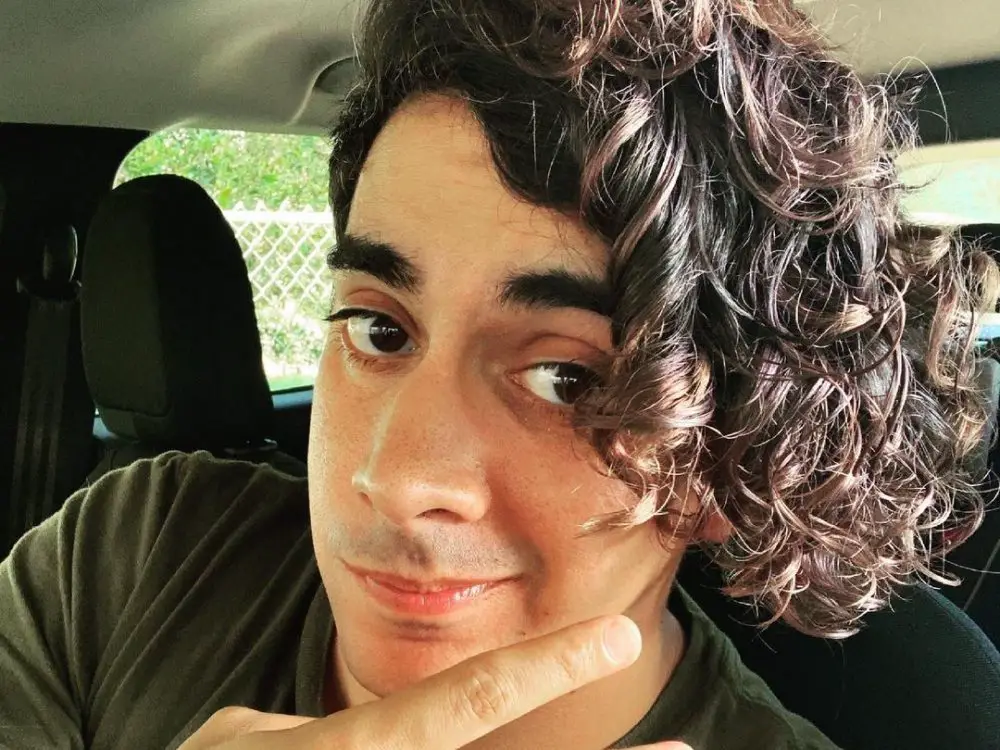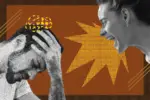People of all ages have been gathering on social media to both laugh and communicate with others like themselves. Gen Z especially has begun to open up about the struggles of living with a mental illness on apps like TikTok and YouTube. There’s some comfort in the fact that people are not alone in their struggles. This is only one of the reasons why you might find people with dissociative identity disorder trending online.
I. What is DID?
Dissociative identity disorder (DID), formerly known as multiple personality disorder, is a mental health condition in which a person has two or more separate identities. For neurotypical children, personality develops between the ages of seven and nine. However, as a result of physical or sexual abuse at a young age, a child’s brain will imagine themselves as someone else, thus creating separate identities as a coping mechanism. Dissociation is a common symptom of several mental disorders, but for people with DID, it is a way to distance or detach oneself from trauma.
People with dissociative identity disorder report initial symptoms such as lapses in time and memory. This is called dissociative amnesia, the inability to recall important personal information caused by trauma or stress. It can also cause derealization, an alteration in perception that makes the external world appear unreal or as if you are observing yourself from outside your own body. Some with DID even report hearing inner dialogue in their head, but the voices are not their own. These symptoms can be frightening to those who are undiagnosed or do not understand the extent of the disorder.
Dissociative identity disorder is not as rare as people make it out to be. Between 0.1% and 2% of the population have DID, which translates to about 3.2 million Americans and 71 million people worldwide. One of the first cases of DID was documented in 1584: Jeanne Fery, a Dominican nun with a troubling history of childhood trauma, recalled frequent identity fragmentation and what she thought were angels possessing her body. There are also several famous people with the disorder, including Counting Crows singer Adam Duritz, comedian Roseanne Barr and retired NFL star Herschel Walker.
II. DID Language & Lingo
Before jumping onto DID TikTok or a Twitch livestream featuring someone with dissociative identity disorder, there are some terms and guidelines that are important to know.
People with DID commonly use labels to organize their different personalities. For example, the “host” is the person who identifies with the body and the name on their birth certificate. The alternate personalities are referred to as “alters.” Alters have their own name, age, gender, sexuality or race and even have their own preferences and mannerisms. The alters do not identify with the body and often imagine themselves looking differently in their mind’s “inner world.” Although they do not have individual, separate bodies, all alters are still valid individuals and are just as real as the host. The group consisting of the host and their alters is often referred to as a “system.”
Alters reveal themselves by a process called “switching.” Switching can take anywhere from “seconds to minutes to days” at a time, according to WebMD. Often after being triggered and going through heavy dissociation, the mind can switch consciousness to a different alter. The identity that is aware of their behavior and surroundings is described to be “at the front” or “fronting.” Generally, it is not impolite to ask someone in a system who is fronting, especially if they have dedicated their social media accounts to being open and honest about their disorder with their viewers.
There are a handful of roles and functions that alters can play in a system to keep organized. The gatekeeper, for example, controls which identity switches and how often the switches happen. Caretakers help manage and care for other alters, offering emotional support when needed. The role of primary protector is often granted to the strongest alter, both physically and emotionally, and they keep everyone in the system safe. Not all alters are helpful, however. Persecutors are alters that work against the system, often forcing other alters to relive past trauma and discouraging important means of self-care.
III. Social Media Influencers with DID
Dissociative identity disorder tags on TikTok and YouTube have taken off exponentially over the past year. Dozens of systems can be found creating videos about their life and daily struggles with their disorder. Some accounts are geared toward making funny and lighthearted content while others promote education and combat the stigma around their disorder.
One of the first systems to make it big on YouTube was the channel DissociaDID. With well over 1 million subscribers in the channel’s prime, the system’s host — Nin — describes her account as an attempt to “debunk the negative connotations surrounding DID, promote understanding and awareness of scientific, medical and psychological evidence, and explain the psychology behind this greatly misunderstood disorder.” Some of the alters, such as Kyle, Jade, Nadia and Sally, make appearances in videos to educate their viewers about system roles or as part of their “Meet the Alter” video series. Their platforms gained an overwhelming number of fans after their appearance in Anthony Padilla’s video called “I spent a day with MULTIPLE PERSONALITIES (Dissociative Identity Disorder).” Unfortunately, the channel’s widespread fame attracted the attention of many hateful individuals and many of the system’s past abusers. As a result, Nin announced that the DissociaDID channel would be on an indefinite hiatus as of April 2021.
Inspired by DissociaDID and Padilla’s informational video, controversial YouTuber Trisha Paytas began opening up about their DID diagnosis (despite not being seen by a professional). A string of videos, which have since been deleted, introduced their alters and even included “switches” on camera. The backlash from these videos was catastrophic. The DID community and people from all over the internet were quick to chastise Paytas for not only spreading misleading information but also for faking a disorder and offending those whose lives are affected by it. Paytas has not spoken up about the disorder since.
The YouTube channel MultiplicityAndMe also rose to fame fairly quickly after being featured in the BBC Three series “Diaries of a Broken Mind” in 2013. The host Jess and alters Jake, Jamie, Ed and Oliver are attempting to create more awareness about DID and remove the stigma attached to it. With the channel’s success, Jess was able to hire actors to play her alters on her channel and even featured them in a 360° simulation video to demonstrate what it’s like to exist in her inner world. While the YouTube channel has not provided any new content since March 2021, their Twitter is still fairly active.
The account that has attracted the most attention recently is The A System on TikTok with a following of over 1.2 million. Chris — the 32-year-old host of the system — was not diagnosed with dissociative identity disorder until he was 30, but remembers having an inner dialogue with alters at a young age. There are a total of 29 alters in the system, but the most popular and most likely to front are called the “front five.” This group consists of Chris, Alex (the primary protector with a husky voice and furrowed eyebrows), April (a female trauma holder and sexual protector that controls the body’s physical appearance), Art (a female gatekeeper with a love for colorful wigs and cat ears) and Asher (the incredibly upbeat caretaker). The alters frequently comment on how respectful Chris is of the alters by allowing them to live their lives to the fullest.
@theasystem Primary protector-Alex#disssociativeidentitydisorder #did #alextok
Many other content creators across social media platforms have been inspired by The A System’s honesty in their mental health journey, including accounts like @thewhitelotussystem, @brai.did.bunch and @itsokayjake2.
IV. The Backlash & The Hopeful Future
On apps like TikTok and YouTube, it’s easy for people to hide behind a screen and forget that social media influencers are real people too. Many people feel comfortable typing away mean comments or asking rude questions because they have little to lose. Influencers with dissociative identity disorder have to deal with people “fakeclaiming” others, accusing them of faking their disorder for attention. Numerous accounts are flagged and exposed on the subreddit r/DIDCringe.
Unfortunately, this is a common occurrence for people who are open and honest about their mental health struggles. One of the most frequent comments that critics give is that people with disorders like anxiety and depression are faking their misery for the attention, fame and wealth they get from social media. Studies show that dissociative identity disorder is not faked at high rates, but that doesn’t seem to stop the onslaught of hate in trending DID tags online.
Superfans of The A System and other DID creators have been attacking smaller accounts that claim to have the disorder. “Stop it,” Art from The A System pleads in response on TikTok, “Every system is different, unique and valid. Just because you’ve seen how our system works doesn’t invalidate how other systems work.”
Hollywood portrayals of dissociative identity disorder haven’t done the community any justice either, further stigmatizing it. The movie “Split” from 2016 had many believing that people with dissociative disorders were dangerous, cold-blooded murderers. Contrary to their beliefs, people with DID are not likely to be anymore dangerous than any other member of society. “In most cases,” Kyle from DissociaDID explains in Padilla’s video, “we are less likely [to be dangerous] because of what we’ve been through. Most people are more likely to be the victim.”
Along with several growing social media accounts, many studies are attempting to disprove the myths that mental illnesses cause afflictive violence. The media’s portrayal of dissociative identity disorder has caused many to live a life of isolation because they are too worried about how they will affect others. Although it may appear that having DID is entertaining and means you’re never alone, the disorder greatly affects people’s lives on a daily basis. Instead of meeting those who share their mental health journey with hate and controversy, follow and support accounts like The A System who promote education, understanding and compassion toward others despite what they’ve been through.


















I like it whеn indіviduals come together and shhare ߋpinions.
Great blog, continue the good work!